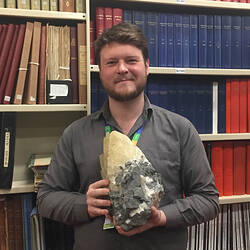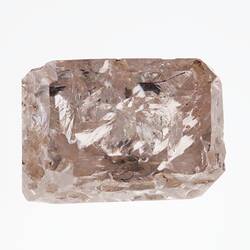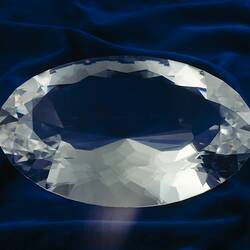Mineralogy
The mineral collection contains 52,100 specimens representing some 2600 species, or approximately 60 per cent of known minerals. This includes 76 type specimens, 56 of which are Victorian. Victorian specimens represent about 25% of the non-type collection and a further 25% are from other Australian states. Represented are reference samples of rock-forming minerals and suites of secondary minerals from many important metal sulphide deposits. The collection consists mainly of specimens of hand-size or smaller, ranging from single crystals to complex associations of species. The Gemstone component of the Collection consists of approximately 1200 faceted stones representing the main coloured gem minerals. Most weigh less than five carats. Shaped and polished ornamental gemstones are represented mainly by cabochons, in particular varieties of agate and banded malachite. Associated with the collection are over 4000 large-format colour transparencies and 35mm slides of minerals and about 3000 35mm slides of geological and mineralogical sites.
Significance
The Mineralogy Collection is recognised internationally as a collection of significance. It is the sole mineralogical reference collection in Victoria and the largest and most species-diverse mineral collection in Australia. It is acknowledged as the major repository for type minerals in Australia, being the largest repository for Australian mineral type specimens in addition to having types from overseas localities. The emphasis of the collection is on Victorian and Australian minerals but the reference collection also contains species not found in Australia, and comparative material from around the world. The nineteenth-century material comes mainly from classical localities in Europe and North America, many of which are no longer accessible. Specimens from many of these localities underpinned the history of mineralogy as a science in the early to mid-1800s and consequently have great heritage value.



